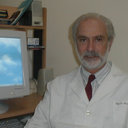In what clinical settings should Cushing's syndrome be suspected?
الكلمات الدالة
نبذة مختصرة
Despite its low frequency, endogenous Cushing's syndrome is not an exceptional clinical entity. A growing number of cases are currently derived to specialized centers suggesting an increasing knowledge of the clinical features of hypercortisolism by specialists of diverse branches of clinical medicine. Clinical signs derive from an exaggeration of the physiological actions of cortisol inducing protein breakdown, hyperglycemia, fat mobilization, dyslipidemia, hydrosaline retention, immunosuppression and increased susceptibility to infection. Despite its low specificity, symptoms such as unexplained development of central obesity, mood changes, fatigue, weakness, myopathy, easy bruisability, red striae, arterial hypertension, diabetes and hyperlipidemia, are suggestive of the diagnosis. From an epidemiological point of view, Cushing's syndrome is to be suspected and consequently searched for among patients with uncontrolled high blood pressure or diabetes mellitus, metabolic syndrome, polycystic ovarian syndrome, osteoporosis, depression or adrenal incidentaloma. True Cushing's syndrome has to be differentiated from pseudo syndromes. Most sensitive physical signs for discriminating Cushing's syndrome from pseudo-Cushing states are the presence of supraclavicular fat pads, myopathy, thin skin and easy bruising. The recognition of the clinical manifestations of Cushing's syndrome and of the sub-populations at risk of contracting the disease should be improved through medical education at the medical school and at postgraduate levels. Clinical detection of Cushing's syndrome must be performed mainly by non-endocrinologists, yet its etiological diagnosis and therapeutic management is to be carried out in highly experienced and specialized centers, to ensure the best results in the treatment of this really challenging endocrine disturbance.


